Mey Member
Rogaland Group, Lista Formation
Unit definition
The Mey Member is attributed to the intra Lista Formation sandstones in subarea SW in
Figs. 12, 13 and 72.
Name
This unit was formerly called the Andrew Formation for the Central Graben Area. The Mey
Member was introduced by Knox & Holloway (1992), and attributed to all the major
sandstone units and associated tuffaceous deposits within the
Lista Formation of the
Outer Moray Firth and the Central Graben. They Mey Member is the age equivalent to the
Andrew Member (Lower Mey) and the Balmoral Member (Middle and Upper Mey) of Neal (1996)
on the UK side.
Derivatio nominis
The Mey Member is named after the Castle Mey, Caithness, Scotland.
Type well
UK well 21/2-1: Depth 2002.5 - 2356.5m RKB. Coordinates N57°55'14.490", E
00°15'46930". Defined by Knox & Holloway (1992).
Reference wells
Norwegian well 7/11-2
(Fig. 73): Depth 3027-3107m RKB. Coordinates 57°4'15.20" N 2°24'26.50" E.
Cores 3030.6-3046.2m RKB.
Norwegian well 7/11-1
(New, this study, Fig. 74). Depth 2975-3070 m RKB. Coordinates N
57°04'15.60", E 02°26'24.40". No cores.
Norwegian well 1/5-2
(New, Fig. 75). Depth 3137 - 3190m RKB. Coordinates N
56°34'41.59", E 02°38'30.53". No cores.
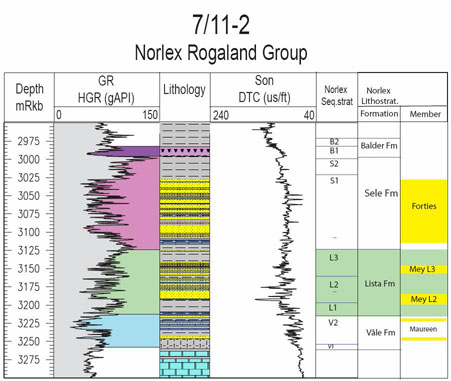
Fig. 73. Well 7/11-2 composite log Rogaland Group. Stratigraphic position of the Mey
Member is outlined in stratigraphic column to the right.
|
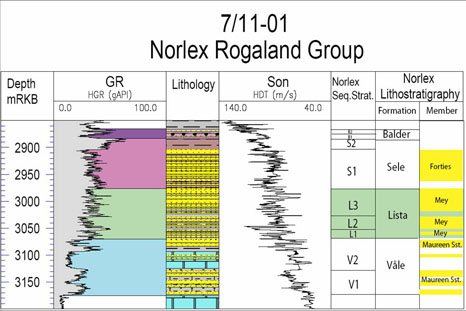
Fig. 74. Well 7/11-1 composite log Rogaland Group. Stratigraphic position of the Mey
Member is outlined in stratigraphic column to the right.
|
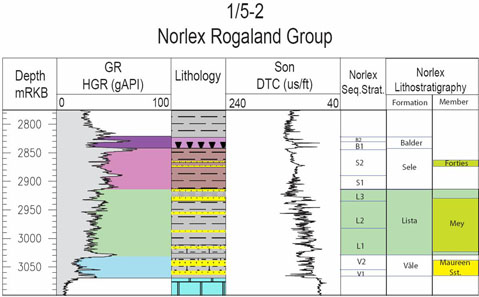
Fig. 75. Well 1/5-2 composite log Rogaland Group. Stratigraphic position of the Mey
Member is outlined in stratigraphic column to the right.
|
Composition
The Mey Member typically consists of stacked units of fine- to medium-grained, or
occasionally coarse-grained, sandstones with common mudstone and chalk clasts (Figs.
76-78).
The non-tuffaceous sandstones of the Mey Member mostly range from fine to medium,
occasionally coarse, sand grade, and commonly include angular clasts of mudstone or
limestone. Rounded and glauconite stained pebbles of chalk and flint are encountered in
some beds. The sandstones consist of a succession of superimposed sandstone units, often
with sharp, erosional base, interbedded with typical variegated, bioturbated Lista
mudstones. Primary structures are scarce, with most sandstones being structureless or
displaying water escape structures (Knox & Holloway 1992). The sandstones include
sporadic zones of calcite cementation, with pervasive cementation in the lowermost
sandstone unit (Mey L1 Sub-member, see below), reflected as consistently higher sonic
velocities. Sandstone intrusions are frequently found associated with the upper boundary
of sandstones bodies often with an abundance of angular and tabular mudstone clasts.
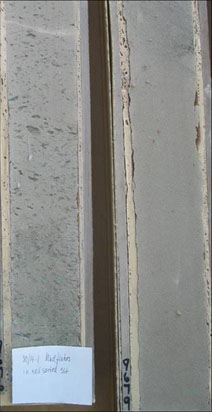
Fig. 76. Core Photograph Mey Member well UK30/14-1. Well sorted sandstones with mud
flakes. The well is drilled at the Flyndre Discovery at the Norwegian/UK Boundary.
Photography by H.Brunstad.
|
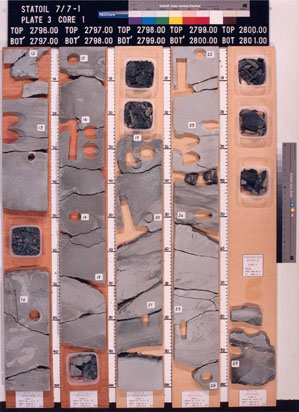
Fig. 77. Core Photograph Mey Member well 7/7-1. The photograph is taken from the
cores described above.
|
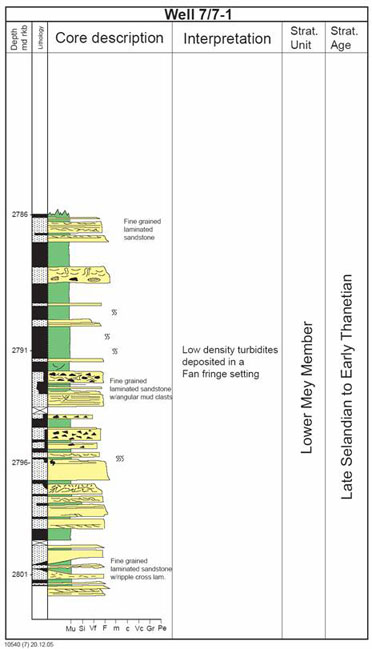
Fig. 78. Well 7/7-1 Core description log.
|
Wireline log characterization
Lower boundary
The Mey Member overlies the Lista and sometimes the
Våle Formation, and the boundary is
characterised by lower gamma readings and increased velocity upwards from the Lista or
Våle Formation below.
Upper boundary
The Lista Formation usually overlies the Mey Member, and the
boundary is characterised
by higher gamma-ray readings and lower velocity upwards into the Lista Formation. Where
the Forties Member directly overlies the Mey Member, the boundary may be more difficult
to define, but the Forties Member generally has a lower velocity than the Mey Member.
This boundary can be very difficult to determine in the Norwegian sector.
Thickness
The Mey Member reaches thicknesses of more than 500 m in the Moray Firth area, but
crossing the Norwegian boundary in the Central Graben, the Mey Member thickness usually
does not exceed more than some tens of meters.
Seismic characterization
Seismic expression is highly variable due to the variable composition of the Mey
sandstones. In some areas the top and base of the sandstones can be picked confidently
(Fig. 79) whereas in other cases the sandstones are mapped out based on seismic isopach
thickenings between mappable events as MFS or sequence boundaries.
By applying the technique of S/G cross plotting explained in chapter 3, the minimum
threshold thickness for the presence of Mey sandstones can be assessed.
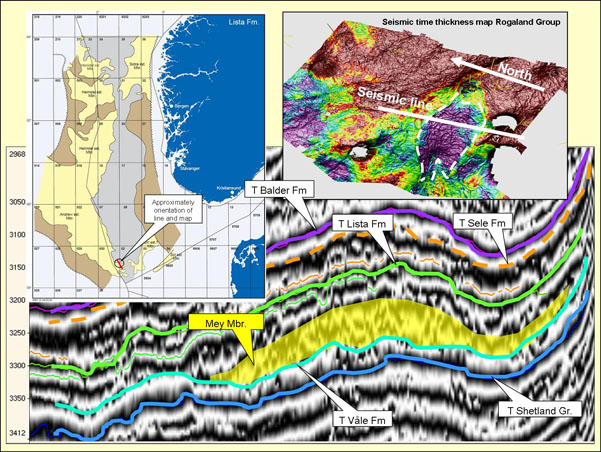
Fig. 79. Seismic section through a lobe shaped thickness anomaly of the Mey Member.
Example is from the blocks 1/5 - 1/6 area, between Flyndre and Albuskjell discoveries.
|
Age
Late Middle to Late Paleocene (Late Selandian to Early Thanetian)
Biostratigraphy
The biostratigraphic subdivision of the Mey Member is directly comparable to that of the
Lista Formation, with the A. gippingensis acme biomarker
and the P. pyrophorum biomarker
allowing further subdivision (Knox & Holloway, 1992). See more biostratigraphical
definition in Subchapter 5.1, Lista Formation.
Correlation and subdivision
The Mey Member is more or less time-equivalent with the
Heimdal Member of the northern
North Sea. To some extent the two fan systems seem to intermix across the Fladen Ground
Spur (Figs. 12 & 13), but they are separated here by a line of supposed minimum
sandstone thickness (Knox & Holloway, 1992).
The Mey Member is divided into units Mey L1, L2 and L3 Submembers. Mey L1 Sub-member
corresponds to the Andrew Member, Mey L2 Submember to Balmoral, and Mey L3 Submember to
Glamis Member of Mudge & Copestake (1992a).
Geographic distribution
The Mey Member is distributed in the Outer Moray Firth area and extends into the Central
Graben, lapping onto the eastern margins of the basin in the Central Graben (Fig. 72).
Occurrences of member tops in wells
Depositional environment
In general, the Mey sandstones were laid down in outer shelf, slope and basin
environments, with the shelf sands being redistributed to form a slope apron made up of
superimposed, laterally coalescing fans (Parker 1975; Stewart 1987). Shelfal areas were
in general located west of the Central Graben, whereas in the Central Graben the
sandstones were deposited by gravity flows in submarine slope to distal basin floor
settings.






